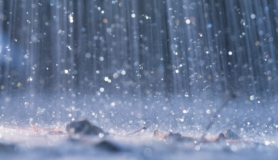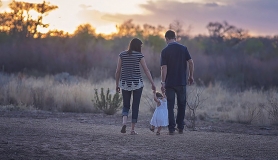DO YOU REMEMBER WHAT IT was like as a child to get lost in a story? Now that you’re an adult watching the next generation of kids grow up, does it sometimes feel like that sensation of lost time has itself been lost? Or like it might be harder for kids today to find those empty pockets of time, to be able to dive headlong into a book? Chances are, you want your child to experience all the natural, timeless, time-stopping joys of reading. School is where children learn that they have to read. Home is where kids learn to read because they want to. It’s where they learn to love to read. It’s always amazing to register the difference when a child freely chooses any activity. Somehow her mood is lighter. A sense of purpose seems to emanate from a genuine, happy place. There’s a palpable eagerness rather than a foot-dragging reticence. Raising a reader is an opportunity to bring some wonderful things into your child’s life. The parent’s part in encouraging a reader is in many ways more interesting, joyful and open-ended than the school’s part of the project, which is focussed on things like phonics, assessments and benchmarks.
Teen Fiction
Literary trends emerge strongly in young adult (YA) books, as in everything else. Paranormal stories dominated some previous decades and still have a big presence, but realism in the vein of John Green’s megahit The Fault in Our Stars, about two teenage cancer patients who fall in love, is going strong as well. These are often the kinds of books that used to be labeled “problem novels”—books that deal with challenging life issues in a realistic way that allows readers to work through their own. Remember that although many of the situations characters in realistic YA books face are disturbing – eating disorders, drug abuse and other forms of self-harm, suicide, mental illness, abusive relationships, every possible kind of untimely death - these books can have incredible value. Whether your child or a friend is going through a similar situation or it’s something everyone’s whispering about at school, books offer the chance to gain compassion, insight, and even simple knowledge about the darker challenges of adolescence.
Wide-Ranging Diversity
Publishers of YA have become especially mindful of diversity—and their teenage readers are gobbling up so-called Own Voices books, written not just about people of colour, people with disabilities, women, or members of the LGBTQ community, but by them as well. Diverse authors such as Sabaa Tahir, Jason Reynolds, and Tomi Adeyemi have become superstars whose fans wait eagerly for their next book and greet them rapturously at public appearances. Whatever your teenager’s gender, sexuality, or ethnic background, he can benefit from reading YA books by a range of authors, with diverse characters, reflecting the world today’s young people are inheriting.
Look at Your Shelves Through Your Teenager’s Eyes
If you’re one of those super-organized people who has books alphabetized by author or colour coded or shelved by subject, congratulations. Your work is done here. If you’re like the rest of us, having a teenager at home might offer a chance to lightly organize your books. Your child may be more apt to consider leaping to more challenging books if finding the right one isn’t in itself a challenge. It could be as simple as keeping fiction in one area, nonfiction in another, or maybe creating a section just for books under three hundred pages, or setting aside a shelf of books you think he would especially enjoy. Even just pointing out where you keep your Stephen Kings.
Give Certain Books Attention
Think of your shelves the way you might envision the most alluring bookshop. Turn certain books face out that your daughter may find appealing. Arrange a stack of books about animals on the coffee table if she recently spoke about animal rights or becoming a veterinarian. Showcase books about the civil rights movement if your son recently brought up the subject. It’s all about creating opportunity, both for reading and for good conversation.
When and Which?
As vibrant as today’s YA scene is, many teenagers tire of reading books that foreground the teenage point of view and are set in the world of their age peers. Who can blame them? We think that in addition to YA, teenagers benefit from some aspirational reading that is not assigned to them by a teacher. And sometimes, they want to check out grown-up genres and escapist reading, too. Many kids find their way into the world of adult books all on their own, but for others, parents can play a powerful role. Consider steering your teenager to a grown-up book with teen appeal—one he is unlikely to be assigned for class. The possibilities are pretty much endless. One place to start is with a teen-friendly classic she may already have heard about, such as Catch-22, The Hitchhiker’s Guide to the Galaxy, or The Group.
Science Fiction as Gateway
Science fiction classics by the greats— Isaac Asimov, Jules Verne, Octavia E. Butler, H. G. Wells, Ursula K. Le Guin, Ray Bradbury—are especially appealing to kids who gravitate toward science, and technology. But there is much more to science fiction. Le Guin and Butler, for example, are considered among the most powerful feminist tale spinners of all time. All teenagers can appreciate the evocative writing, expansive imagination, and often searing social commentary embedded in the best science fiction books, so consider recommending them to your teenager even if science is not her favourite subject. Then introduce her to contemporary grownup writers in those genres, such as N. K. Jemisin and Naomi Novik.
The Benefits of Biography
Teenagers are grappling with their identity and their place in the world, which makes them ripe for stories about how other people have figured out their own lives. Memoir, autobiography, and biography can be the best kind of motivation. They can also encourage a child to take a good hard look at himself, and function as a kind of self-help: It’s instructive and reassuring to learn about how other people have overcome challenges and made their way in the world. If your child is interested in computers, you might suggest Walter Isaacson’s biography of Steve Jobs or a book about the history of the internet. Sports and history buffs have plenty of fodder. Find biographies of people who share your child’s ethnic or racial or religious heritage. Teenagers like to read about other people who look like them, mirror their experiences or feelings, and understand the communities they live in, but they may just as frequently be drawn to the stories of people who couldn’t be more different and relish the chance to vicariously experience the kinds of challenges they themselves never will.
The Enduring Power of Comics and Graphic Novels
Many of the great works by comics artists were, and are, written for adults, but teenagers are perfectly equipped to appreciate them, too. Art Spiegelman’s Maus and Marjane Satrapi’s Persepolis, both written with an adult audience in mind, are included in many school curricula. Many more excellent graphic novels and memoirs are not published as YA but might speak to your teenager, like Alison Bechdel’s Fun Home, David Small’s Stitches and Home After Dark, and David Carlson and Landis Blair’s The Hunting Accident. As always, a more visual young reader will respond to graphic novels with an interest he rarely shows for text-heavy books.
MORE INSPIRATION
READ How to Raise a Reader by Pamela Paul and Maria Russo (Workman)
REVIEW Check out commonsensemedia.org







